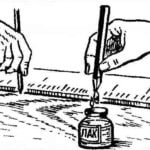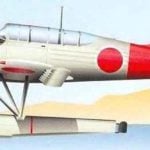 The light on the dash must have heard many. A pistol or shotgun just like the real thing, the rings of a target with a ten in the middle. Yes, but “bullets” are not the same. Pulled the trigger and the target affects short flash of light. And the brighter dalnoboynie weapon. The light beam of the flash lamp to “shoot” at a target even from a distance of 25 m. This corresponds to one of the distances sports bullet shooting.
The light on the dash must have heard many. A pistol or shotgun just like the real thing, the rings of a target with a ten in the middle. Yes, but “bullets” are not the same. Pulled the trigger and the target affects short flash of light. And the brighter dalnoboynie weapon. The light beam of the flash lamp to “shoot” at a target even from a distance of 25 m. This corresponds to one of the distances sports bullet shooting.
Device photoestafeta for a training tyre shown in figure 1. The wooden grip is fixed: barrel, pulse Pampa IFK-120, microcopy, trigger, and inside is the cable that connects the gun with the power supply. The trunk is the dural tube Ø 26X1,5 mm (it is acceptable to glue it in and out of thick paper). In breech-mounted diaphragm with hole Ø 0,8 mm. It can be moved along the barrel. In the muzzle part zavalova Packed lens + 3.5 diopter.
The diaphragm is mounted in the focal plane of the lens then “shoots” a beam of light dissipates slightly (its diameter is approximately equal to the diameter of the lens).
To align the optical system with the aperture close to it, a pulse is placed the lamp of the flashlight. The barrel of the gun is directed to a white screen and by moving the aperture to get a sharp image of the light spot. Then the diaphragm is fixed with glue or paint.
Width of aluminum flies should correspond with the “line of fire” visible size of the “bullseye” of the target. Under this condition, the aiming will be the most accurate.
Pillar — angled aluminium strip with two holes Ø 6.5 mm and a notch width of 5-6 mm. To the casing of the gun is secured with two M4 screws. The position of cepica need to adjust, moving it in the “sighting”.

Fig. 1. Photopicture:
1 — fly, 2 — lens, 3 — barrel, 4 — arm, 5 — diaphragm, 6 — flash lamp IFK-120, 7 — casing, 8 — the rear sight, 9 — cable, 10 — microcopy, 11 is a trigger.

Fig. 2. Circuit of the flash lamp.

Fig. 3. Photomixing:
1 — blend, 2 — photoresistor, 3 — shield, 4 — circuit Board, 5 — variable resistor, 6 — casing (Fig. the side wall is not shown), 7 — cables, 8 — base, 9 — signal lamp.
Circuit of the flash lamp shown in figure 2. As a Tpi you can use any power transformer with a power of 60-80 watts from stationary receivers, for example, the gramophone “Record”. The resistor R1 with a capacity of not less than 5 W is required to limit the current flowing through the secondary winding Tp1 and the diode D1 at the time of the outbreak. Instead of R1, you can use normal pumps filament voltage is 220 V with a capacity of 15-25 watts. By the way, it will serve as a charge indicator capacitor C1 (charge accumulation intensity is reduced and it turns off). For the same chain and will serve as a neon lamp, switched on via a quenching resistor of 200— 300 ohms in parallel with capacitor C1 (the indicator will turn on when the battery is fully charged C1). Ten to fifteen seconds, which are aiming, enough to fully charge the capacitor C1.
Pulse transformer it is best to take the serial from any of the flash lamp (“Beam”, “Lightning”, etc.), but it is easy to make. On an insulating frame 15 mm diameter and a length of 18 mm (you can use the spool from thread No. 20), equipped with plates Ø 25 mm, first reel bulk 200— 250 turns of wire sew-2 0,2—0,25 mm, make the withdrawal, and then the winding is continued until the fill the frame.
Core for this transformer is not needed.
When capacitance C1 of 800 microfarads to decrease slightly the brightness of the light spot, and the range “shooting” will be reduced to 10-15 m. For the living room, this distance is sufficient.
The power supply of the gun is most convenient to mount in the bag from the flash or in a small plywood box with a belt.
The target (Fig. 3) is configured as a vertical shield with concentric circles mounted on the Board base. Circle on the target is purely symbolic. The role of “Apple” performs mounted in the center of the target photoresistor. From the side illumination it is protected by the lens hood — black paper or plastic tube Ø 25-30 mm. as are all the signal light flashing when light falls on the photoresistor and circuit Board.
The scheme (Fig. 4) target is an electronic relay transistor T1. Photoresistor R1 and variable resistor R2 form a voltage divider that determines the mode of operation T1. The voltage-stabilized diode D1.
When the light falls on the working layer of the photoresistor, its conductivity increases relay R1 and the warning light is lit. After attenuation of the light bulb goes off.
Variable resistor R2, as displayed on the faceplate of the target, is to adjust the threshold turnips R1 depending on the level of “background” exposure. Inside the lens hood is recommended to paste over a dark fabric, it will eliminate false alarms and increase the reliability of photomechanic.

Fig. 4. The circuitry of the target.

Fig. 5. Diagram of the audible alarm.

Fig. 6. The light rifle.
To celebrate getting not only a lamp but also a sound signal. In this case, the photoresistor should be included under the scheme with active load (Fig. 5). The polarity of turning on the power supply to the device is not affected.
Using an isolating capacitor C1 to the target shielded wire connects to the input of low frequency amplifier. When the illumination of the photoresistor across the load R2 is formed by a voltage pulse, causing the loudspeaker to sound similar to the kick drum.
The amplifier is collected by any scheme and with a dynamic head mounted directly in the target.
Set a “weapon” it is easy to complement camera gun with an optical system (Fig. 6). Just need to find a more telephoto lens, for example, +2 or +1.5 diopter. Suitable glass glasses, turned to the required diameter of the corundum grinding wheel at slow its rotation, and a generous wetting with water. Gun barrel using a thin-walled metal tube, the length of which is selected depending on the magnitude of the focal length of the lens.
M. IVANOV, Yuri IVANOV, Rostov-on-don



